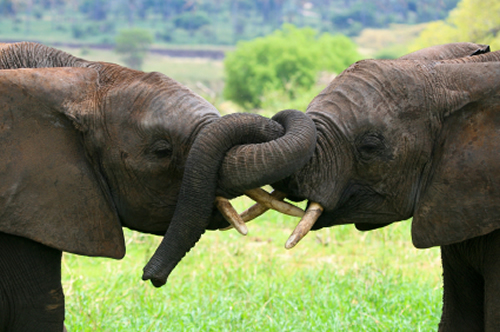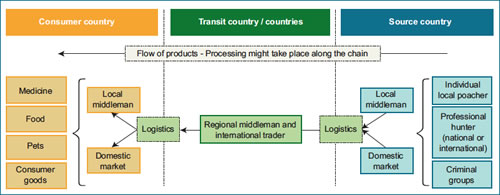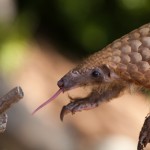
A comprehensive report commissioned by WWF and TRAFFIC confirms that the illegal wildlife trade — with an estimated value in excess of US $20 billion annually — poses a serious threat to global security.
The study, released in December 2012, found that the illegal wildlife trade, including fisheries and timber, comprises the fourth largest global illegal trade after narcotics, humans and counterfeit products.
- Wildlife trafficking: US $7.8 — $10 billion;
- Unregulated fisheries trade: US $4.2 — $9.5 billion;
- Illegal timber trade: US $7 billion per year.
Low risks and high profits make wildlife trafficking an attractive endeavor for international criminal networks.
On behalf of WWF and TRAFFIC, Dalberg Global Development Advisors conducted a series of interviews with 22 representatives from international organizations and governments, asking questions “specifically targeted [towards] senior-level representatives from ministries of justice, trade and economic affairs”. Although there was “ample time for input”, many declined to participate or did not reply, perhaps signaling that wildlife trafficking is not viewed as “an issue of concern” outside of environmental ministries.
Two government representatives asked for the questionnaire to be modified to remove specific questions about corruption as they did not feel comfortable answering such questions.
Respondents pointed out that halting the illegal wildlife trade “is not a priority for governments” and that the current approach to stop wildlife trafficking is failing. They acknowledged that allowing this criminal enterprise to flourish — particularly trafficking in rhino horn, ivory and tiger parts — has “far-reaching implications for society as a whole”.
The current global approach to fighting illicit wildlife trafficking is failing because governments do not give the issue high enough priority and have not succeeded in implementing an effective response – at either a national or an international level. The absence of an effective response hinders social and economic development, including potential economic loss for governments, and has direct consequences on the environment as well as national and international security.
Not only does wildlife trafficking rob developing countries of natural wealth by depleting species and causing extinctions, a significant portion of the illegal wildlife trade is run by international criminal networks who use the proceeds to fund terrorist activities and civil conflicts.

Wildlife traffickers are frequently involved with money laundering and other types of illicit activity which depend upon corrupt governments. Illicit trade in wildlife also increases the risk of global epidemics — for example, avian influenza and SARS — among all species, including humans.
But there is encouraging news: Governments, international organizations, and the private sector can help bring an end to wildlife trafficking by engaging in coordinated interventions designed to influence behavior, such as:
- Demand reduction campaigns;
- Awareness-raising campaigns;
- Convictions of all actors in the supply chain (shooters, suppliers, couriers, buyers, and sellers);
- Application of trade sanctions;
- Publication of “blacklists” (similar to the WWF Wildlife Crime Scorecard, which measured progress towards CITES commitments).
While it is clear that a systematic global effort to fighting wildlife trafficking is necessary, it is worth noting that this approach will be successful only if the responsible parties are held accountable for their actions, as well as for their lack of action.
See also:
- ‘Wildlife Conservation Day’ is Dec. 4: U.S. Launches Global Campaign Against Wildlife Trafficking
- Report: Asian, African Countries Failing to Control Illegal Wildlife Trade
- U.S. Senate Hearing: Elephant Killings, Ivory Trade Undermining Global Security
Source: WWF / Dalberg. 2012. Fighting illicit wildlife trafficking: A consultation with governments. WWF International, Gland, Switzerland.
Image: iStockphoto.com




